Write an equation to show how the current pathways in this circuit relate to each other.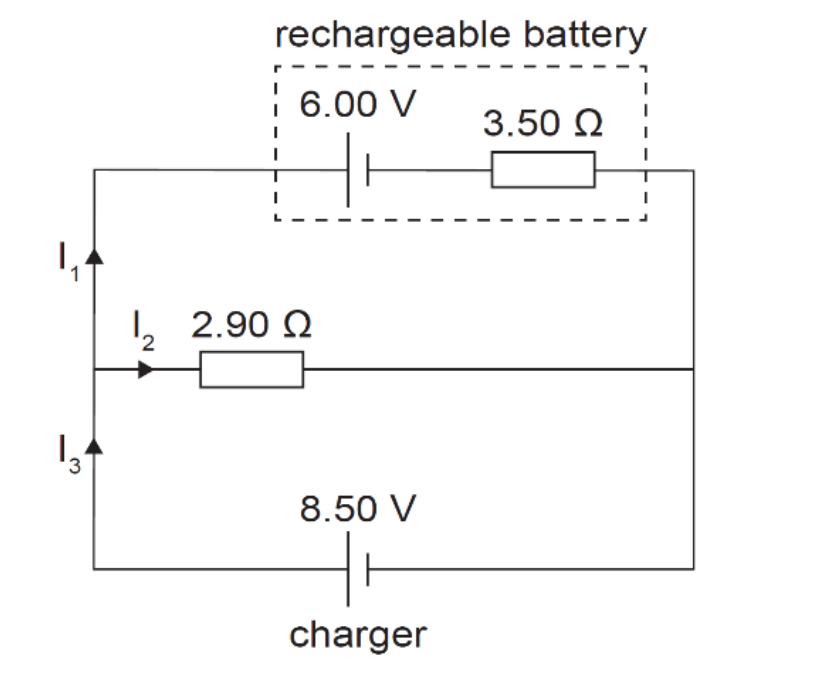
I3 = I1 + I2
Which of these set ups would have a greater amount of total capacitance?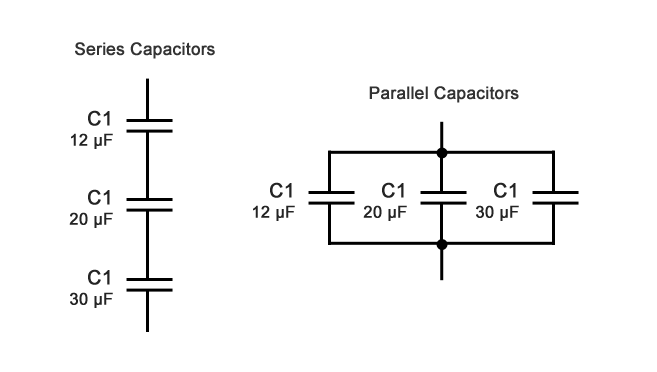
The one in parallel. Adding capacitors in parallel is effectively like increasing the area of the plates charge can build up on.
In series the capacitance decreases as it's effectively like increasing the distance between the plates of one capacitor.
Which of these would increase the induced voltage (back emf) from an inductor?
a) If more turns were added to the coil
b) If there was a greater change in flux / current through it
c) If the change in flux / current happens over a longer time
a and b
a) Because each turn of the coil induces a voltage.
b) The greater the change in flux, the great the opposing induced voltage (ε = −ΔΦ / Δt).
Not c
c) Because the faster the change in flux, the stronger the induced voltage (ε = −ΔΦ / Δt). Slower means less emf.
What does the RMS voltage or current of an AC power supply mean?
Like an 'average' amount of voltage or current. It is the equivalent voltage or current to a DC circuit with the same power output.
What is a batteries 'terminal voltage'?
It is the voltage that is available from the battery once it is connected to a circuit. It is not equal to the emf (supply voltage) as some of the voltage is 'lost' to the internal resistance of the battery.
How could you increase the capacitance of a capacitor?
Use an equation to support your answer.
1. You could add a dielectric material
2. You could increase the area of the plates so that more charge can be held on them
3. You could decrease the distance between the plates.
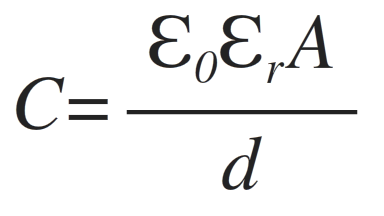
Which of these graphs shows what happens to the current in a circuit that contains an inductor when it is first switched on? Left or right?
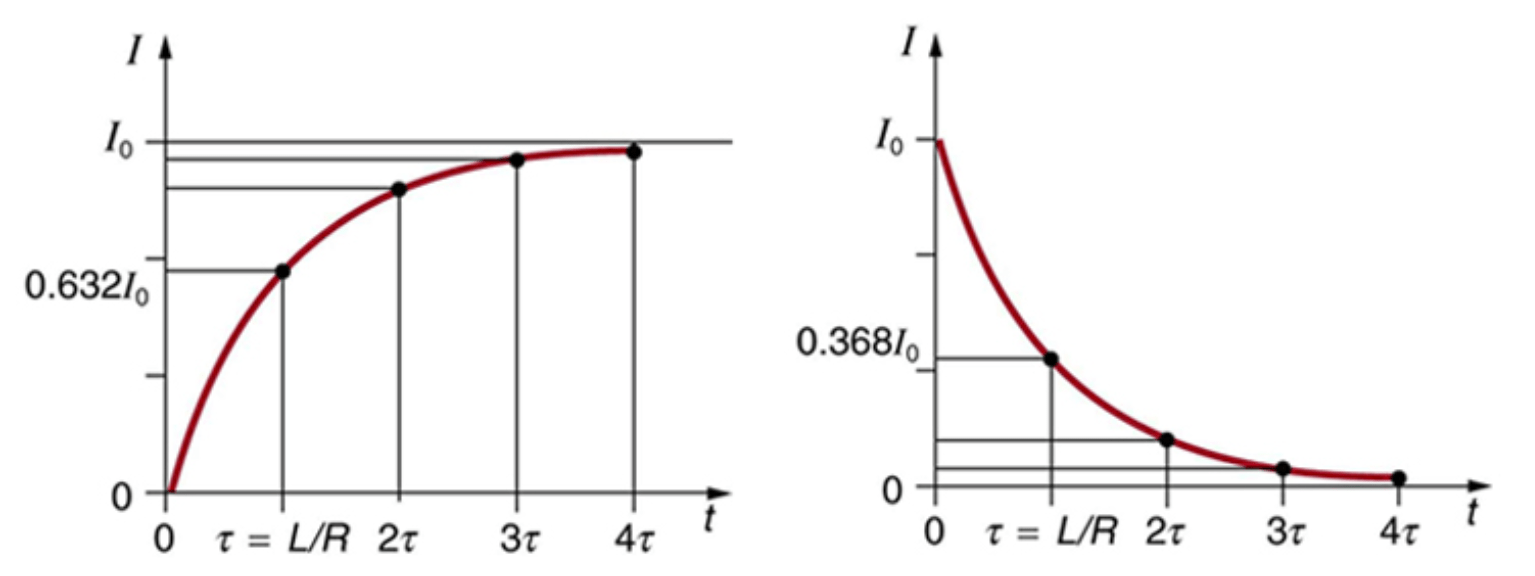
Left. Because the inductor opposes the change in current as the circuit is first turned on and current starts to flow. It produces a back emf which slows the increase of current in the circuit.
In a circuit with an AC power supply with 50VRMS, 100Hz, there is a capacitor and resistor connected in series. What will happen to the current in the circuit if the frequency was increased?
XC = 1 / (ωC) - if frequency increases, so does angular frequency. If ω increases, the reactance of the capacitor will decrease (they are inversely proportional).
The current will therefore increase in the circuit as the overall impedance will have decreased (V=IZ).
What would happen to the terminal voltage in this circuit if another resistor were added in parallel?
It would decrease. If a resistor were added in parallel, the overall resistance would decrease. This would mean that the current in the circuit would increase (V=I↑ R↓). This would mean that the voltage across the internal resistor would be greater, so less voltage would be available to the rest of the circuit. V = ε - Ir.
How does a capacitor store energy?
In an electric field. The two plates gain opposite charges creating a potential difference (voltage).
If a magnet with a magnetic field strength of 0.550T moves through an inductor with an area of 0.0310m2 and 100 turns, what will the magnetic flux produced be (remember units)?
Φ = BA = 0.55 x 0.0310 = 0.1705Wb per turn
For whole inductor: 0.1705 x 100 turns
Total flux = 17.1Wb (3sf)
Calculate the voltage in an AC circuit after 0.002s if the max voltage is 12V and the frequency is 250Hz.
V = Vmaxsinωt
ω = 2𝞹f = 2𝞹 x 250 = 2570.796rads-1
V = 12 x sin (2570.796 x 0.002) = -10.9V
You can ignore the negative sign as it is just describing the direction of the voltage.
This battery has an emf of 6.02V and terminal voltage of 5.85V with a 3.00Ω lamp connected. Show that its internal resistance is approximately 0.09Ω.
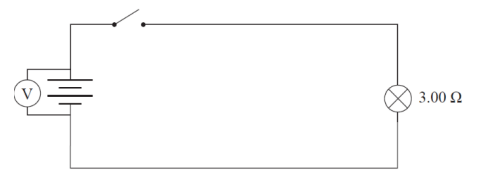
I = 5.85V / 3.00Ω = 1.95A
V = emf - Ir
5.85 = 6.02 - (1.95 x r)
1.95r = 0.17
r = 0.08718 = 0.09Ω (1sf)
Show that the energy stored by the capacitor when it is fully charged by the 1.5V battery, would be 2.08 x 10-7 J. The capacitor has a capacitance of 185nF (185 x 10-9 F or 1.85 x 10-7F).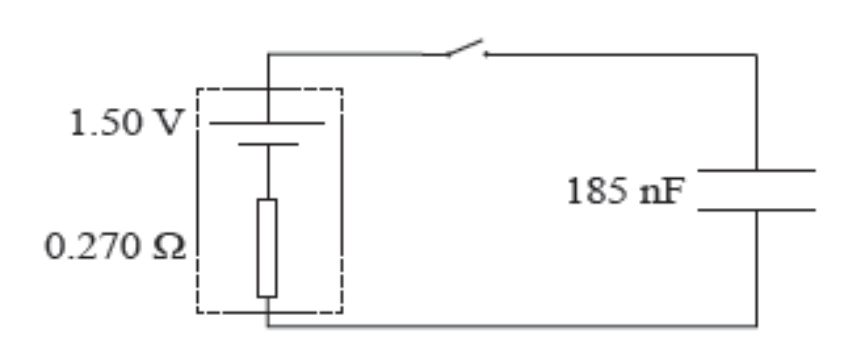
E = 1/2 QV
Q = CV = 1.85 x 10-7 x 1.5 = 2.78 x 10-7C
E = 1/2 x 2.78 x 10-7 x 1.5 = 2.08 x 10-7 J
How does a magnet moving through a coil of wire produce electrical energy?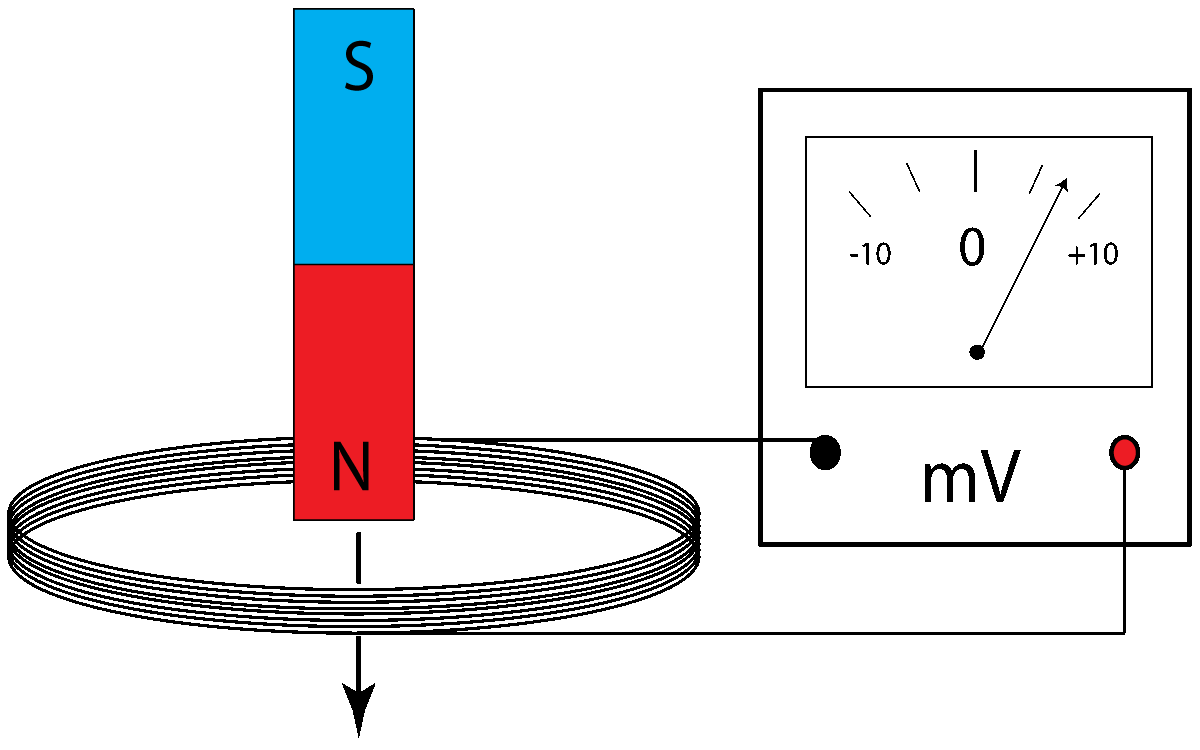
The changing flux in the coil induces a voltage (or back emf) that opposes the change in flux.
i.e. ε = −ΔΦ / Δt
What is the resistance of the resistor in this circuit, if the total impedance is 12.8Ω and the reactance of the capacitor is 7.20Ω. Use a phasor diagram to show your working.
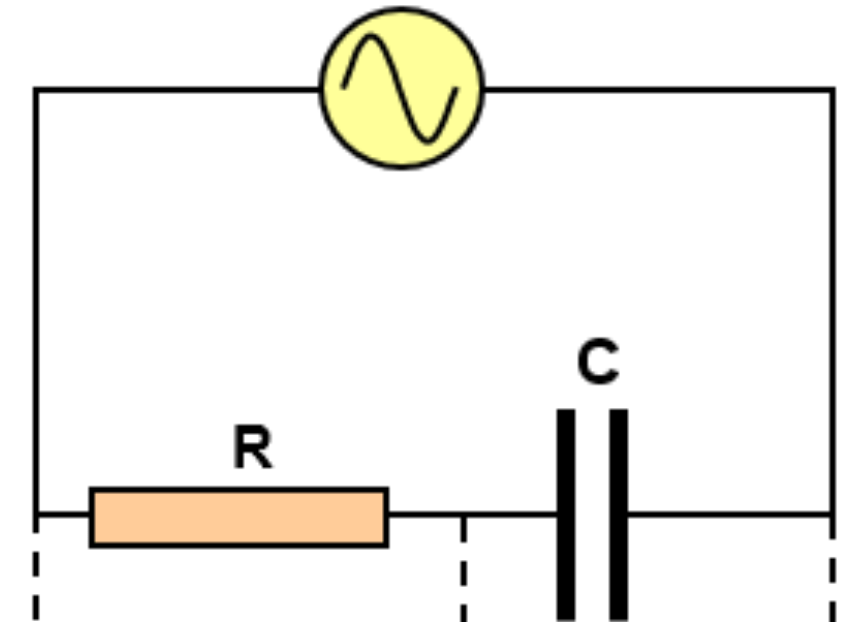
12.82 = 7.202 + R2
R2 = 12.82 -7.202 = 112
R = √112 = 10.6Ω (3sf)
What's Ib (the total current).
Figure out what the resistance of R is.
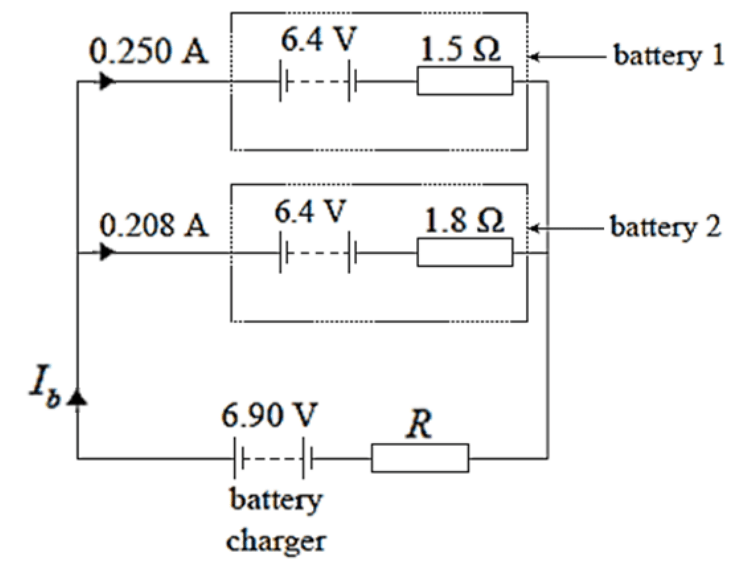
Kirchoff's current law: Ib = 0.250 + 0.208 = 0.458A
Kirchoff's voltage law:
+6.90 - 6.4 - (0.208 x 1.5) - (0.458 x R) = 0
0.458 x R = 0.1256V
R = 0.273Ω OR 0.274Ω if you did other loop.
Draw a voltage vs time graph of a capacitor when it is discharging. The capacitor has a capacitance of 4.18 x 10-3F and is in series with a 23.0Ω resistor. It has a voltage of 15V when fully charged.
Have at least two data points.

τ = RC = 23.0 x 4.18 x 10-3 = 0.0961s
0s: V = 15V
1τ (0.0961s): V = 15 x 0.37 = 5.55V
2τ (0.192s): V = 1.3875 x 0.37 = 2.05V (3sf)
3τ (0.288s): V = 2.0535 x 0.37 = 0.760V (3sf)
A transformer has a primary coil with 80 turns. The secondary coil has 130 turns and a voltage of 300V. What is the voltage in the primary coil?
Np / Ns = Vp / Vs
80 / 130 = Vp / 300
Vp = 185V (3sf)
Describe what is going on when an RCL circuit is at resonance.
Mention - impedance, reactance and current.
Resonance occurs when the reactance of the capacitor = the reactance of the inductor (XC = XL). Because they are 180 degrees out of phase, they cancel each other out. This means that the impedance is at its minimum, equal to the resistance of the resistor (Z = R). Therefore, current is at its maximum (V = IZ).